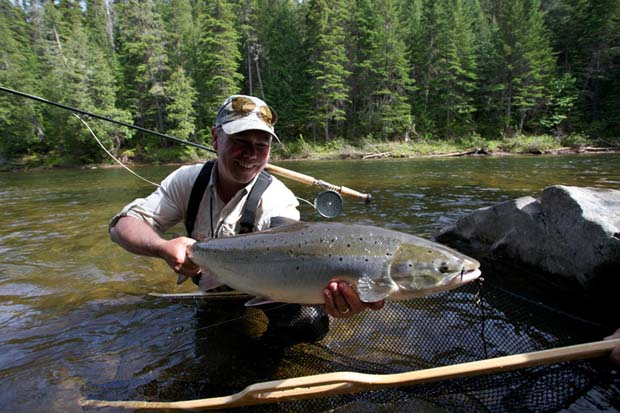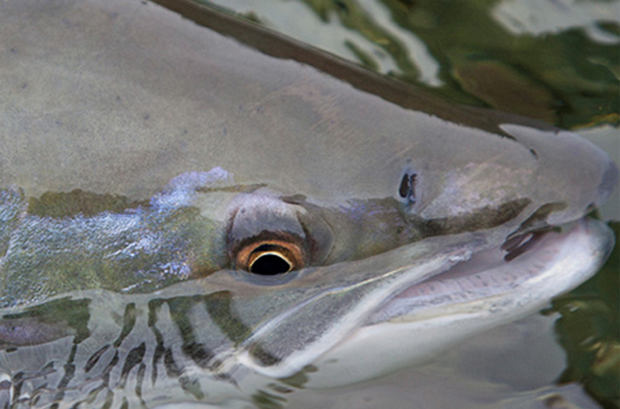The State of the Atlantic Salmon
By Monte Burke, Contributor for Forbes LIFESTYLE
[dropcap]T[/dropcap]he Atlantic salmon (Salmo salar, a.k.a. “the leaper”) is what’s known as an indicator species. That is, the health—or the lack thereof—of the species is an indicator of the general environmental health of its surroundings.
On that score, the indications have not been very good.
In the 1970s and 80s, there were roughly 1.8 million Atlantic salmon returning to North American rivers to spawn. That number dropped to 418,000 in the 1990s, thanks mainly to commercial overharvest and habitat destruction.
Hundreds of thousands of salmon used to swim up rivers—like the Penobscot and the Connecticut—in the United States. Today, the Atlantic salmon is listed as an endangered species in the U.S. and in parts of Canada.
There is hope, though. Since hitting that low in the 1990s, the North American population of Atlantic salmon has, gradually and slowly, been on an uptick. Recent estimates suggest that somewhere around 600,000 salmon have returned to their native rivers to spawn.
Much of that success—and the reason for perhaps even more hope for the future—is due to the Atlantic Salmon Federation.
The ASF is based in New Brunswick, Canada. With just 7,500 members, it is tiny compared to some of its peers—Trout Unlimited has somewhere close to 150,000 members and Ducks Unlimited’s membership is around 780,000.
And yet the ASF has, for many years now, punched well above its weight in the fight for salmon conservation, pushing governments and commercial and recreational fishermen to do the right thing, and getting real tangible results. The ASF has led the way in tearing down dams. Maybe most important, it spearheaded an agreement to close the commercial harvest of Atlantic salmon off the coast of Greenland. In 1971, the Greenland fishery was taking 2,689 metric tons of Atlantic salmon. Thanks to the ASF-led agreement, it’s now down to what amounts to merely a subsistence fishery for Greenlanders.

Photo credit Fédération québécoise pour le saumon atlantiquefqsa.ca. Rob Dorcas with gorgeous Atlantic salmon from Rivière Cascapédia.
Since 1995, the ASF has been led by a man named Bill Taylor. The 55-year-old Taylor—a former hockey player with the scars to prove it—is one of the most impressive conservationists I’ve ever met. He is indefatigable. He is always on point. He’s an incredible fundraiser. He’s passionate enough to know when the ASF must go on its own and make its own deals. He’s calm and reasonable enough to work with governments when needed. He does not do this on his own, of course: ASF donors (which includes the Irving family, Marshall Field, V., and Paul Volcker) and its small, but dedicated staff, are all conservation heroes, as well. The group brings to mind the great quote from Margaret Mead: “Never doubt that a small group of thoughtful, committed citizens can change the world; indeed, it’s the only thing that ever has.”
With Atlantic salmon fishing season right around the corner, I thought it was time to catch up with Taylor to talk about the state of the Atlantic salmon in 2016.
Last year was a big one for Atlantic salmon, at least in the US. Spawning fish have been found in the Connecticut river watershed. Your thoughts?
The past year, 2015, was certainly an encouraging one for wild Atlantic salmon . . .






